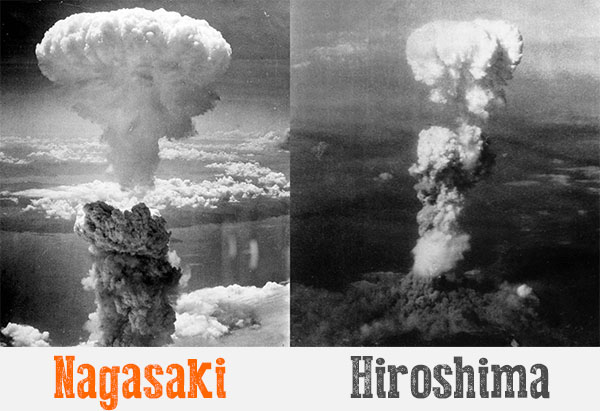HAPPY NATIONAL TECHNOLOGY DAY!
(in advance!)
11th May is observed as India's national technology day every year. It marks the anniversary of the successful Pokhran nuclear tests of 1998 and India's technological advancements into space.
Well, I don't think I need to inform you about the Pokhran nuclear tests as I am quite sure that most of you must have seen the movie 'Parmanu: The Story of Pokhran'. And, if you haven't, what are you waiting for?! Its available on Netflix and is aired several times on Zee Cinema as well.
Still, just for a briefing, the Pokhran nuclear tests were a series of five nuclear bomb test explosions conducted by India at the Indian Army's Pokhran Test Range on 11th May 1998. The tests achieved their main objective of giving India the capability to build fission and thermonuclear weapons with yields up to 200 Kilotons. Later, Prime Minister Atal Bihari Vajpayee declared India a nuclear state, making it the sixth country to join the ‘nuclear club’ of nations. Hence, since 1999, May 11 is celebrated as 'National Technology Day'.
However, this wasn't India's first nuclear test. India's first nuclear test was conducted on 18th May 1974. It was said to be a "peaceful nuclear test" in Pokhran and is commonly called "the smiling Buddha".
Well, as we now know about the history behind Technology Day, let's celebrate it by solving trivia questions related to nuclear chemistry! Here are three questions related to nuclear chemistry for you to solve... And as always, do comment your answers! I'll be posting the answers on 12th May (Wednesday).
All the best!👍
1. The source of energy produced by the sun is _____________.
2. The energy produced by splitting of uranium atoms is _______.
3. Which is more stronger/dangerous? Hydrogen bomb or atomic bomb?
“Above all, don't fear difficult moments. The best comes from them.”
Answers
1. The source of energy produced by the sun is nuclear fusion.
➪The sun (and all the stars) is a gigantic ball of hydrogen gas. Also, the centre of the sun experiences the highest amount of gravity. Here, both the conditions required for nuclear fusion are present - High Temperature and High Pressure. Hence, hydrogen gas present in the centre of the sun gets squeezed (due to gravitational force). It gets squeezed together so tightly that hydrogen nuclei separate from their electrons and four hydrogen nuclei combine to form one helium atom. This is called nuclear fusion. In the process, some of the mass of the hydrogen atoms gets converted into energy in the form of light and heat.
2. The energy produced by splitting of uranium atoms is nuclear energy.
➪The energy contained in the nucleus of atom is called nuclear energy. It is released during nuclear fission. In nuclear fission, a heavy nucleus splits into two or more smaller nuclei. It is bombarded with slow moving neutrons due to which large amount of energy (nuclear energy) is released.
The fission of an atom of uranium produces 10 million times the energy produced by the combustion of an atom of carbon from coal. Also, in all fission reactions, a small quantity of matter gets lost to get converted to energy. The amount of energy produced during nuclear fission is given by Einstein's famous equation :
*where E is the energy produced
m is the mass of matter lost
c is the velocity of light = 3 x 10^8 m/s
Uranium is used to produce nuclear energy as its atoms easily split apart.
3. A hydrogen bomb has the potential to be 1000 times more powerful than an atomic bomb.
➪No hydrogen bombs have ever been used in war till now. If used, it has the power to wipe out entire cities and kill significantly more people than the atom bomb did in 1945 on Hiroshima and Nagasaki. Only two atomic bombs have been used in war till now, both the times by the United States of America in the Second World War on Japan.
Hydrogen bombs are based on nuclear fusion while atomic bombs are based on nuclear fission. Nuclear fusion is said to be more powerful (i.e. generates more energy) as it is the source of energy in all the stars which produce significant amount of energy.
As a hydrogen bomb is based on nuclear fusion, it requires high temperature to explode. So, a nuclear bomb based on fission of uranium or plutonium is placed at the core of the hydrogen bomb first. So, when the bomb based on fission detonates, the temperature of the hydrogen bomb (based on fusion) raises to 10^7 K in just a few microseconds. As a result, nuclear fusion takes place and a devastating amount of energy is released.
Remember, 'Learning is a treasure that will follow its owner everywhere!'
So that's it from me for this week! See ya'll on Sunday!
************










1 Nuclear fusion
ReplyDelete2 Nuclear energy
3 hydrogen bomb
Correct! Well done!:)
DeleteHitesh
ReplyDelete1 nuclear fusion
2 nuclear fission for electricity
3 hydrogen bomb
Excellent! All correct!:)
Delete1. Nuclear fusion.
ReplyDelete2. Energy of nuclear fission.
3. Hydrogen bomb.
Well done! All correct!:)
DeleteNuclear fusion
ReplyDeleteNuclear energy
Hydrogen bomb
All Correct! Keep it up!:)
DeleteWhoa!😮😀 Great going my sci-buddies! All of your answers are correct!👍 Keep answering every Sunday!:)
ReplyDeleteGreat explanation Yashvi! Keep going. Love reading your posts and learning something new.
ReplyDeleteThanks a lot for your support Manishi! Really appreciate your regular viewing and commenting on my blog!:)
ReplyDelete